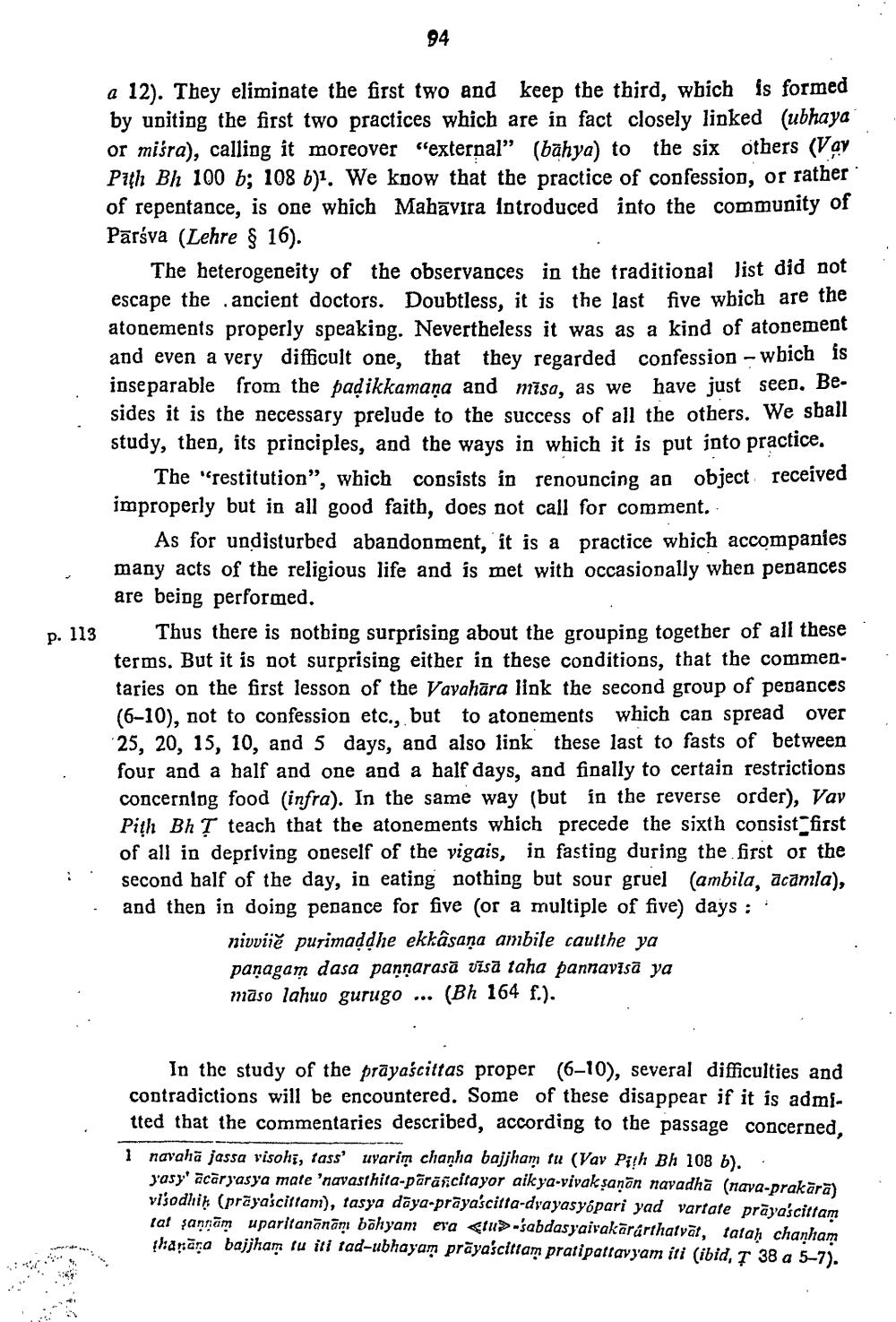________________
a 12). They eliminate the first two and keep the third, which is formed by uniting the first two practices which are in fact closely linked (ubhaya or miśra), calling it moreover “external” (bahya) to the six others (Vay Path Bh 100 b; 108 b)2. We know that the practice of confession, or rather of repentance, is one which Mahavira Introduced into the community of Pārśva (Lehre § 16).
The heterogeneity of the observances in the traditional list did not escape the ancient doctors. Doubtless, it is the last five wbich are the atonements properly speaking. Nevertheless it was as a kind of atonement and even a very difficult one, that they regarded confession - wbich is inseparable from the padikkamana and misa, as we have just seen. Besides it is the necessary prelude to the success of all the others. We sball study, then, its principles, and the ways in which it is put into practice.
The "restitution", which consists in renouncing an object received improperly but in all good faith, does not call for comment.
As for undisturbed abandonment, it is a practice wbich accompanies many acts of the religious life and is met with occasionally when penances are being performed.
Thus there is nothing surprising about the grouping together of all these terms. But it is not surprising either in these conditions, that the commentaries on the first lesson of the Vayahāra link the second group of penances (6-10), not to confession etc., but to atonements which can spread over 25, 20, 15, 10, and 5 days, and also link these last to fasts of between four and a half and one and a half days, and finally to certain restrictions concerning food infra). In the same way (but in the reverse order), Vay Pith Bh T teach that the atonements which precede the sixth consist first of all in depriving oneself of the vigais, in fasting during the first of the second half of the day, in eating nothing but sour gruel (ambila, acamla), and then in doing penance for five (or a multiple of five) days : .
nivviiě purimaddhe ekkâsana ambile caulthe ya panagam dasa pannarasā visa taha pannavisā ya mäso lahuo gurugo ... (Bh 164 f.).
p. 113
In the study of the prayascittas proper (6-10), several difficulties and contradictions will be encountered. Some of these disappear if it is admi. tted that the commentaries described, according to the passage concerned. 1 navahā jassa visohi, tass' uvarim chanha bajjham tu (Vay Pith Bh 108 b)..
yasy' acaryasya mate 'navasthita-pārāficitayor aikya-vivak saņān navadha (nava-prakārā) višodhik (prayascillam), tasya daya-prayascitta-dyayasyöpari yad vartate prāya'scittam tal şannam uparitanānām böhyam era ciu>-sabdasyairakararthalvat, tatah chanham harara bajjham tu ili tad-ubhayam prāyaścitiam pratipattavyam iti (ibid, T 38 a 5-7).




